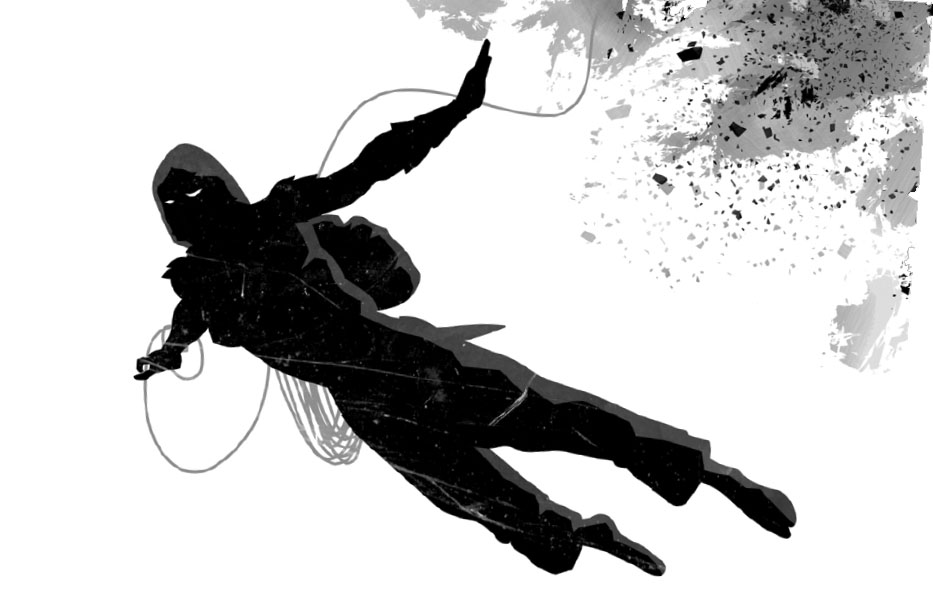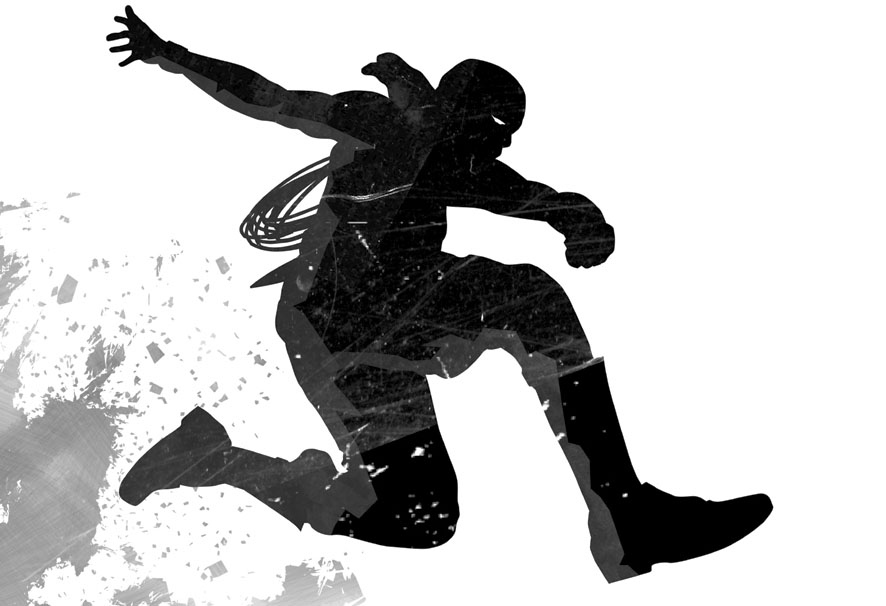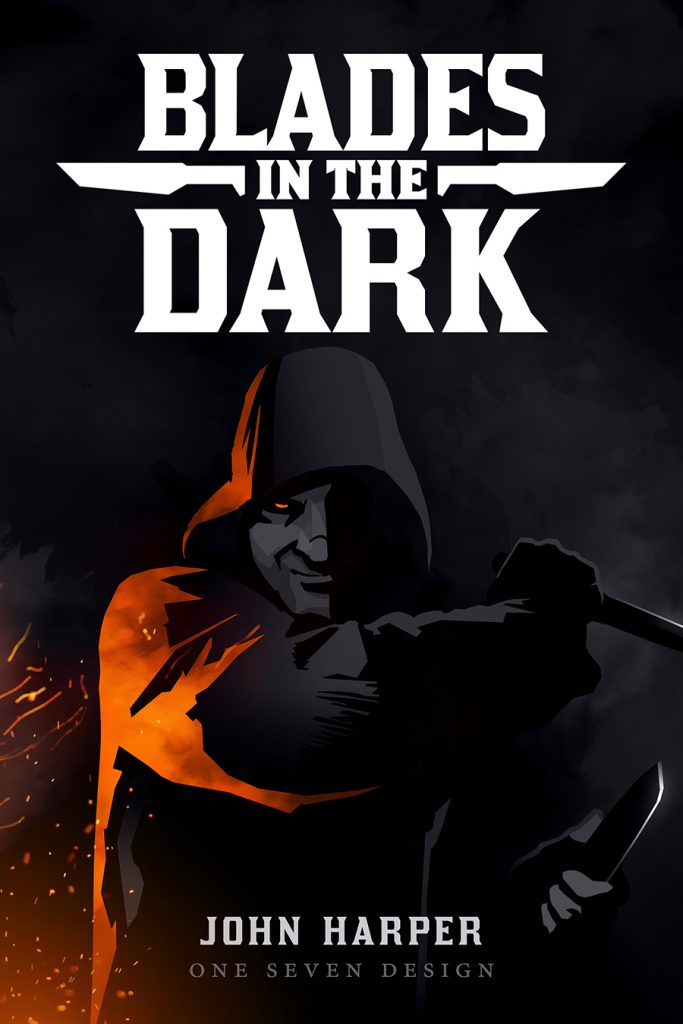Last time we looked at some alternative starting situations for Blades in the Dark which were more or less inline with the default starting situation presented in the core rulebook. This time we’re going to look at slightly more complicated options that will push the boundaries of what we can try while still having a fundamental foundation in the mechanical and narrative structures of the game.
THE USUAL SUSPECTS
- The PCs have been incarcerated. Although none of them knew each other before prison, they were somehow thrust together inside: Maybe they were arrested at the same time. Maybe they were assigned to the same cellblock or the same work gang.
- Ask the players individually what they were arrested for. Ask them collectively how they met.
- Look at the prison claims on p. 149 of the core rulebook. These claims are usually gained through incarceration rolls, but for our introductory scenario we’re going to run a prison score. Have the players pick a claim they want to pursue.
- As with crew claims in the outside world, taking control of a prison claim will require the PCs to go through the faction who currently controls it. Pick that faction and figure out how they’re securing or operating the claim currently.
- After the first score is resolved, cut ahead to the point where all of the PCs have been released from prison: Now that they’re free, they’re ready to form a crew and make a name for themselves.
- For their second score, look at the prison claim they took and figure out what outside action and/or infrastructure is needed to sustain it. (For example, how can they take pressure off a guard that they’ve paid off? How can they keep their smuggling channel clear?)
- Pick a second faction that’s trying to muscle in on the crew’s action (or maybe simply looking to compete with them). The second score is fending off the threat.
A few tips:
- The faction standing between the scoundrels and their prison claim can be the Bluecoats. It is, after all, their job to keep things secure in Ironhook.
- After the first score is complete, it may be effective to cut directly to a scene featuring the last member of the crew getting released from prison and/or showing up at the crew’s new hideout.
- The trick to making this situation work is really embracing the claustrophobic nature of the prison job and creating a strong contrast with life on the outside.
- This starting situation is likely to be more challenging for the PCs because it almost certainly means having a negative status with two different factions (instead of a negative-positive split between a couple of factions). Be aware of that and perhaps give the PCs a chance to quickly ingratiate themselves with a third faction. (This third faction could be opposed to the factions they’ve already alienated in an “enemy of my enemy” kind of deal.)
 EXAMPLE – SMUGGLING: Ironhook is riddled with ghost doors, a legacy of the long history of pain and violence within the prison’s walls. Keeping them sealed and warded is an important part of prison security. A fief-witch of the Dimmer Sisters has managed to drill through the wards around one of the doors, however, creating a spirit tunnel from a second ghost door in Dunslough. The ghost door in Ironhook opens in a laundry. The PCs will need to figure out how to get regular, long-term access to the door. They’ll also need to figure out how to deny access to the crew currently running it.
EXAMPLE – SMUGGLING: Ironhook is riddled with ghost doors, a legacy of the long history of pain and violence within the prison’s walls. Keeping them sealed and warded is an important part of prison security. A fief-witch of the Dimmer Sisters has managed to drill through the wards around one of the doors, however, creating a spirit tunnel from a second ghost door in Dunslough. The ghost door in Ironhook opens in a laundry. The PCs will need to figure out how to get regular, long-term access to the door. They’ll also need to figure out how to deny access to the crew currently running it.
This could turn into a jailbreak scenario. But if they use the ghost door to break out of prison, it’s virtually certain the guards will discover and seal the door, eliminating the Smuggling claim. (That’ll probably piss the Dimmer Sisters off even more, honestly.)
If they keep the smuggling channel open, then when they get out of prison they’re approached by the Lampblacks. Their gang war with the Crows has spread to Ironhook, and the lampers want the PCs to smuggle weapons in so that they can “retaliate”. They’ll pay well, but a big influx of weapons will put a lot of heat on the PCs’ operation. If the PCs refuse, the lampers will try to seize the spirit tunnel for themselves. If the PCs go for it, the Crows will get wind of the deal and try to intervene.
EXAMPLE – ALLIED CLAIM (CULT SANCTUARY): Down in the Heart – the core of the Ironhook complex – there are the tangled, maze-like remnants of the original prison and the castle which preceded it. And somewhere within that maze is a forgotten, hidden temple dedicated to the Night Queen. It’s one part Shawshank Redemption, one part Tomb Raider as the PCs follow the enigmatic clues left in the notes of a true believer!
Once inside the temple, each of them can dip a black opal in the milky pool of the Night Queen’s tears, pledging themselves to her service.
When the PCs get out, a Night Queen cult comes looking for the opals. And a different cult, this one pledged to the Squamous Red, seeks to destroy them.
AT WAR!!!
- Pick a faction. The PCs are at war with that faction!
- The PCs effectively start as a Tier 0 faction with Strong hold, as per a standard campaign. But they’ll immediately increase in hold if the war ends, just as they would with any other war.
- Ask the questions:
GM asks: Who started the war?
Players ask: What damage have they done to us?
GM asks: How do you strike back?
- And that’s the first score.
- For the second score, have the other faction hit the PCs’ crew.
- At this point, have a second faction either sympathetic to the PCs or hostile to the PCs’ enemy approach the PCs. They’re willing to ally with the PCs… but they’re not doing it out of the goodness of their heart. (The cost will likely end up being the third or fourth score.)
Tips:
- This is a very difficult starting situation. It’s probably best used with advanced players who already have experience running a Blades in the Dark crew.
- The PCs effectively start at a higher Tier than normal (although temporarily reduced due to the war). Consider this fair compensation for the unusually difficult starting situation.
- When picking an enemy faction, you need to pick one with a Tier equivalent to the PCs or, at most, one higher. As a starting crew, the PCs have very limited resources and a gang war is hard to endure at the best of times. (This is also why the structure brings in an early alliance.)
- When using this structure, you might want to consider starting the PCs’ crew at a higher Tier than usual. (This will also open up more options for the faction they’re in conflict with.)
- This structure can also be a good way to launch a Season Two (Blades in the Dark, p. 206). Close out the previous season, let some time pass, and then cut to in media res as the opposing faction throws a firebomb through the window of the crew’s hideout. YOU’RE AT WAR! Now what?

















